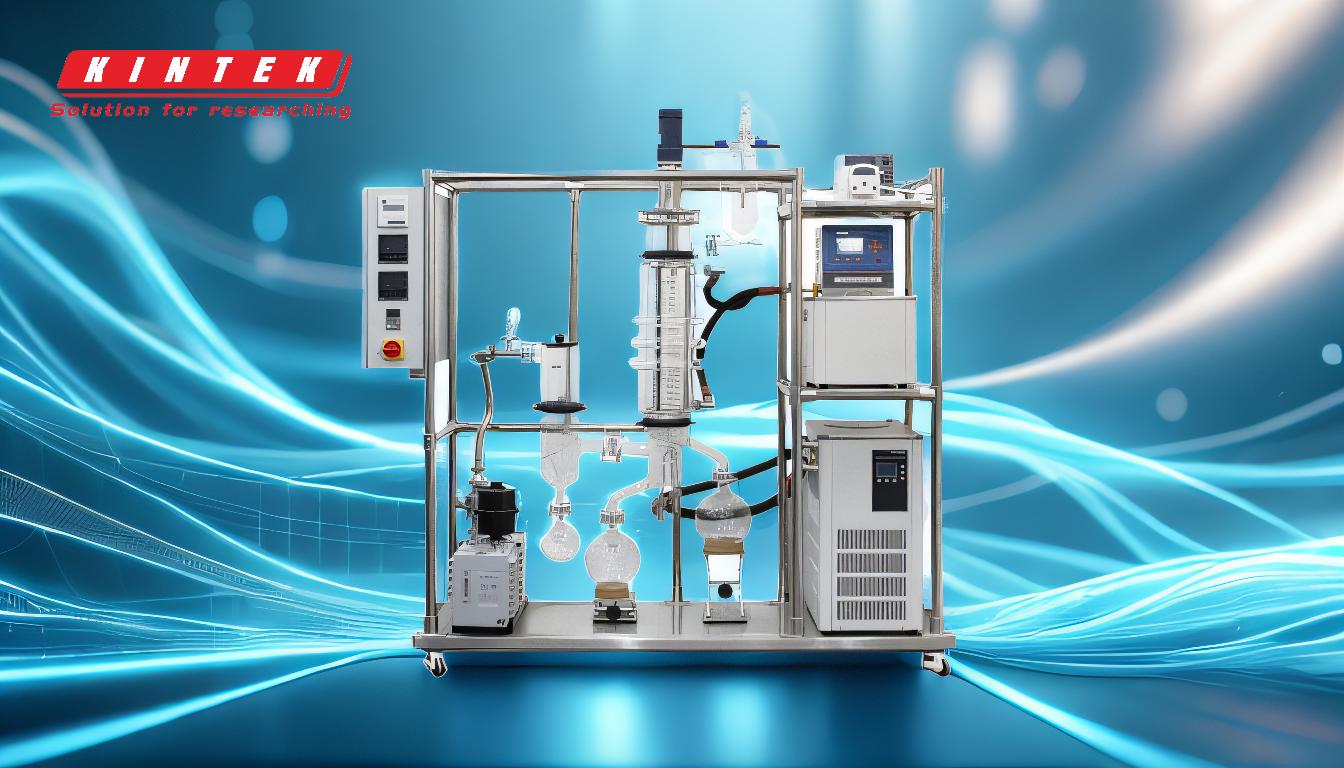Distillation is a separation technique that primarily relies on differences in boiling points to separate components in a mixture. When a mixture is heated, the component with the lower boiling point vaporizes first, while the component with the higher boiling point remains in liquid form. The vapor is then cooled and condensed back into a liquid, resulting in the separation of the two components. This principle is fundamental to all forms of distillation, including short-path and molecular distillation, which are specialized techniques used for heat-sensitive or high-boiling-point materials. These advanced methods operate under vacuum conditions to lower boiling points and minimize thermal degradation, ensuring efficient separation of compounds based on their volatility and molecular behavior.
Key Points Explained:

-
Distillation Separates Based on Boiling Points
- Distillation is a process that separates components in a mixture by exploiting differences in their boiling points.
- When a mixture is heated, the component with the lower boiling point vaporizes first, while the component with the higher boiling point remains in the liquid phase.
- The vaporized component is then condensed back into a liquid and collected as the distillate, effectively separating it from the mixture.
-
Role of Boiling Point in Separation
- The boiling point of a compound determines the temperature at which it transitions from a liquid to a gas.
- In distillation, the mixture is heated to the boiling point of the desired compound, allowing it to vaporize and separate from other components.
- This principle is critical in both simple and advanced distillation techniques, such as short-path and molecular distillation.
-
Short-Path Distillation
- Short-path distillation is a specialized technique that operates under high vacuum conditions (less than 0.001 mbar).
- The vacuum reduces the boiling points of the components, making it suitable for separating heat-sensitive or high-boiling-point materials.
- The process involves a short distance between the evaporator and the condenser, minimizing the exposure of the distillate to high temperatures and reducing the risk of thermal degradation.
-
Molecular Distillation
- Molecular distillation is based on the principle of mean free path, where molecules travel without colliding under high vacuum conditions.
- This method is ideal for separating thermally unstable molecules with low volatility and high boiling points.
- The process ensures minimal intermolecular collisions, allowing for efficient separation based on individual molecular behavior.
-
Vacuum Conditions in Advanced Distillation
- Both short-path and molecular distillation rely on vacuum conditions to lower the boiling points of the components.
- The reduced pressure minimizes thermal stress on heat-sensitive materials, ensuring that they are not degraded during the separation process.
- The vacuum also enhances the efficiency of the separation by reducing the energy required for vaporization.
-
Applications of Distillation
- Distillation is widely used in industries such as pharmaceuticals, food and beverage, and chemical manufacturing to purify and separate compounds.
- Short-path and molecular distillation are particularly useful for processing heat-sensitive materials, such as essential oils, vitamins, and polymers.
- The ability to separate compounds based on boiling points makes distillation a versatile and essential technique in many fields.
-
Limitations of Distillation
- While distillation is effective for separating components with significantly different boiling points, it may struggle with mixtures where the boiling points are very close.
- Advanced techniques like fractional distillation or azeotropic distillation may be required for such cases.
- Additionally, distillation may not be suitable for separating compounds that decompose at their boiling points, even under vacuum conditions.
In summary, distillation separates mixtures based on differences in boiling points, with advanced techniques like short-path and molecular distillation offering specialized solutions for heat-sensitive or high-boiling-point materials. The process is highly versatile and widely applicable, though it has limitations when dealing with closely boiling or thermally unstable compounds.
Summary Table:
| Key Aspect | Description |
|---|---|
| Separation Principle | Distillation separates components based on differences in boiling points. |
| Boiling Point Role | Lower boiling point compounds vaporize first, while higher ones remain liquid. |
| Short-Path Distillation | Operates under high vacuum; ideal for heat-sensitive or high-boiling materials. |
| Molecular Distillation | Uses mean free path principle; separates thermally unstable molecules. |
| Applications | Pharmaceuticals, food, and chemical industries for purification and separation. |
| Limitations | Struggles with closely boiling or thermally unstable compounds. |
Need help with distillation techniques? Contact our experts today for tailored solutions!









